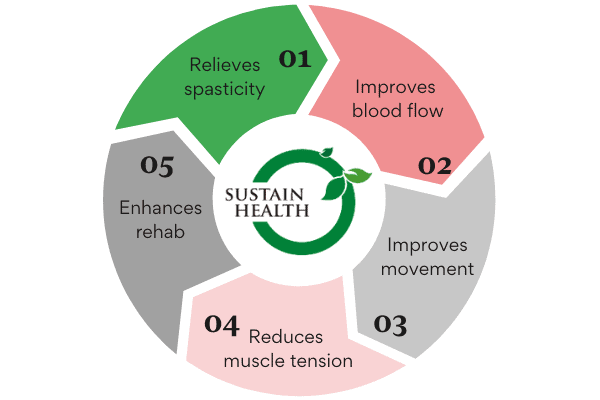Acupuncture for Cerebral Palsy

How does acupuncture help cerebral palsy?
The aim of treatments for children with cerebral palsy is to manage the condition. Which requires a team of specialists. Including integrating acupuncture for cerebral palsy with rehabilitation programs.
Acupuncture for cerebral palsy involves selecting points that relate to specific brain function, in a method called Neuro-Acupuncture.
Neuro-Acupuncture combines Western medicine’s mapping of the brain with acupuncture. By targeting regions on the scalp, Neuro-Acupuncture can have an effect on that region of the brain.
So what are the benefits you may ask:
- Relieves spasticity(1)(2)(3)(4)
- Improves blood flow(6)
- Improves movement(2)
- Reduces muscle tension(3)
- Promotes the metabolism of the brain cells
- Enhances exercise therapy and rehabilitation(2)(5)

But it is not just needles.
Neuro-Acupuncture treatments also include some form of physical exercise. During the treatments, conscious movements are exercised to complete the neural circuit.
What does that mean?
Well, depending on your child's physical needs, appropriate movements are utilised. This is so muscles and nerve networks can be stimulated to strengthen that connection.
Combines with exercise therapy

When acupuncture is integrated with rehabilitation therapies, children show better improvements(2)(5).
Acupuncture for cerebral palsy helps to improve motor function during exercise therapy. This leads to breakthroughs in treatments.
Promotes functional movement

Acupuncture for cerebral palsy activates regions of the brain responsible for movement(2).
Which can enhance children’s ability to complete daily activities(2).
Scalp acupuncture for cerebral palsy

Scalp acupuncture is a technique that targets specific regions of the brain. Regions are selected based on the specific needs of your child.
By targeting the master controller of the body (the brain), scalp acupuncture is able to create positive changes.
Cerebral palsy is a complex condition
Children with cerebral palsy often have unmet needs for rehabilitation. The disease is complex. Cerebral palsy is often resistant to treatments.
So what more can we do?
- Acupuncture in combination with exercise therapy to enhance results and help progress
- Not only treat the disability. But look at other elements of your child's health. Such as digestion, emotions, sleep, mobility and cognition
- Individualise management programs
- Start treatments as early as possible
- https://www.ncbi.nlm.nih.gov/pmc/articles/PMC6775425/
- Shi, L., Guo, L., Zhang, H., Li, Y., Zhong, D., Xiao, Q., Li, J., Ye, X. and Jin, R., 2019. Acupuncture for poststroke spasticity. Medicine, 98(39), p.e17124.
- https://pubmed.ncbi.nlm.nih.gov/31003673/
- Gao J, He L, Yu X, Wang L, Chen H, Zhao B, et al. Rehabilitation with a combination of scalp acupuncture and exercise therapy in spastic cerebral palsy. Complement Ther Clin Pract. 2019;35:296-300.
- https://pubmed.ncbi.nlm.nih.gov/29972000/
- Zhang M, Liu Z. [Effects of acupuncture on muscle tension of lower limb in children with spastic cerebral palsy]. Zhongguo Zhen Jiu. 2018;38(6):591-5.
- https://pubmed.ncbi.nlm.nih.gov/31898768/
- Wang LL, Shan L, Du L, Zhang Y, Jia FY. Comparison of Electroacupuncture and Body Acupuncture on Gastrocnemius Muscle Tone in Children with Spastic Cerebral Palsy: A Single Blinded, Randomized Controlled Pilot Trial. Chin J Integr Med. 2020;26(1):14-9.
- https://pubmed.ncbi.nlm.nih.gov/29926839/
- Li LX, Zhang MM, Zhang Y, He J. Acupuncture for cerebral palsy: A meta-analysis of randomized controlled trials. Neural Regen Res. 2018;13(6):1107-17.
- https://www.ncbi.nlm.nih.gov/pmc/articles/PMC6890304/
- Lee, G., Lee, P., Ran, N. and Zhou, J., 2019. Scalp acupuncture for children with cerebral palsy. Medicine, 98(48), p.e18062.

